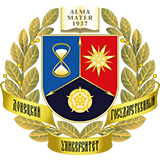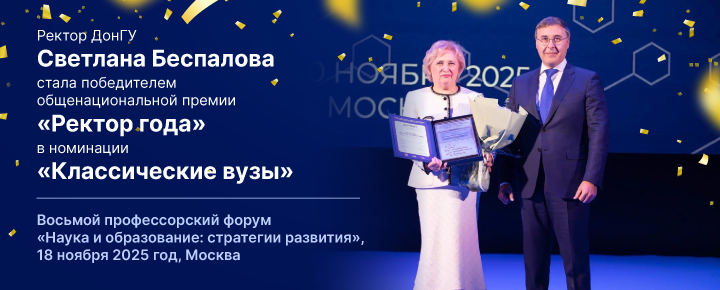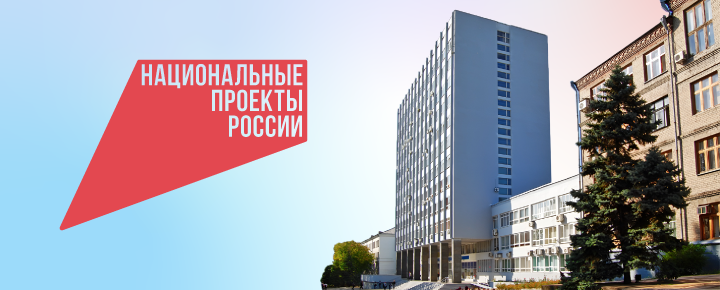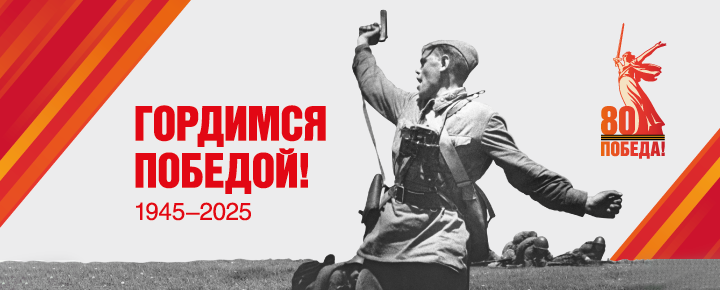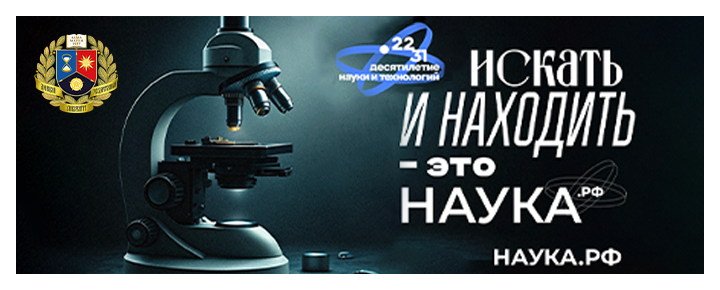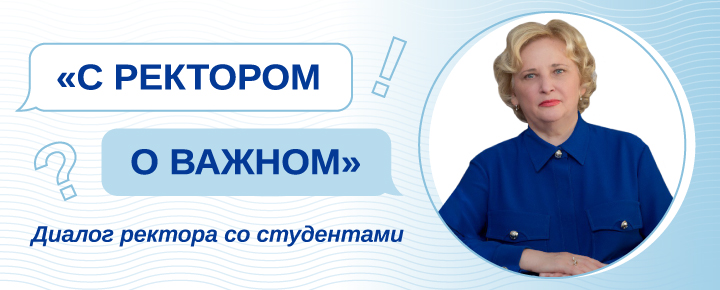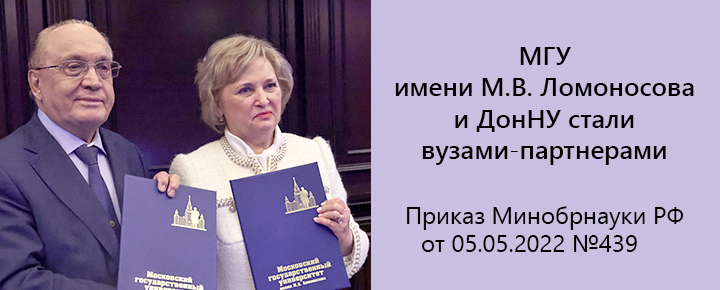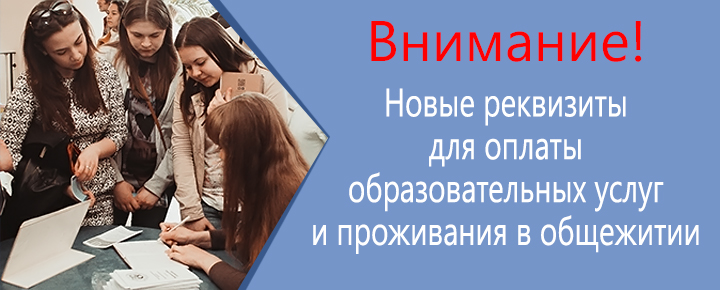RULES OF SUBMITTING AND FORMATTING OF ARTICLES,
SENT TO THE EDITORIAL OFFICE OF THE SCIENTIFIC JOURNAL
"STUDIA GERMANICA, ROMANICA ET COMPARATISTICA"
1. GENERAL REQUIREMENTS FOR THE ARTICLE CONTENT
1.1. The journal publishes scientific articles on linguistics, translation studies, applied linguistics.
1.2. The journal publishes only original, previously unpublished scientific papers.
1.3. The languages of the publication are Russian, English, German, French, Spanish. In the scientific article submitted for publication, the author should justify the relevance of the topic, articulate clearly the purpose and objectives of the research, provide scientific arguments, generalizations and conclusions that are of interest for their novelty, scientific and practical significance. The article should provide an overview of the latest scientific literature on the problem under consideration.
1.4. Manuscripts that are prepared without taking into account the requirements for their formatting (see below) are not accepted.
2. GENERAL REQUIREMENTS FOR THE FORMATTING OF ARTICLES
2.1. Manuscripts should be formatted as .doc (Word 1997-2003) or .docx (Word2007-2012).
2.2. The recommended volume of the article submitted for publication is 15000-25000 characters with spaces (8-12 pages).
2.3. Page setups: 210 x 297 mm (A4 format), portrait orientation. Page margins: left – 30 mm, top – 20 mm, right – 15 mm, bottom – 25 mm. The font is regular, Times New Roman. Font size: 12 points in the main text, 10 points in footnotes. Line spacing: one and a half in the main text, single in footnotes. The indent of the paragraph is 10 mm. The dash (–) should be clearly differentiated from the hyphen (-).
2.4. The text of the manuscript should be submitted as a single file.
3. STRUCTURE AND GENERAL RULES OF FORMATTING (see an example below)
3.1. In the left upper corner, the UDC is printed in a non-bold straight font (size 12).
3.2. The initials and surname of the author(s) are printed before the title of the article in bold straight font (size 12).
3.3. The title of the article is printed in capital letters, block paragraph, in bold straight font (size 14), single line spacing, without automatic hyphenation.
3.4. After the title of the article, annotations (up to 50 words) and no more than 10 keywords are provided in two languages – Russian and English. Font size: 12 points, italics, 1 interval apart.
3.5. The text of the article.
3.6. References in Russian (size 12, 1 interval apart) (see item 6 below).
3.7. References in English (size 12, 1 interval apart) (see item 7 below).
3.8. Credits (Information about the author) (size 11, italics, 1 interval apart).
Example:
|
УДК
© 2016 Ш. Р. Басыров
ФУТБОЛЬНАЯ РАЗГОВОРНАЯ ЛЕКСИКА
(НА МАТЕРИАЛЕ ГЛАГОЛОВ
НЕМЕЦКОГО РАЗГОВОРНОГО ЯЗЫКА) Статья посвящена изучению футбольной терминологии в современном немецком языке. Устанавливаются способы образования глаголов, выявляются словообразовательные средства, участвующие в их образовании, их активность, а также описывается семантика глагольных лексем в немецком разговорном языке. …
Ключевые слова: разговорная лексика, способ образования, дериват, семантическая группа, семантика, субъект, коннотация, образность, метафоризация.
© 2016 Sh. R. Basyrov
COLLOQUIAL FOOTBALL LEXIS
(BASED ON VERBS OF SPOKEN GERMAN)
The paper deals with football terminology in the contemporary German language. The paper studies the structure and semantics of verbs in football lexis, reveals the ways of their formation, presents the semantic classification of these lexemes and describes their productivity. …
Key words: ……………….
Текст статьи
………….
СПИСОК ЛИТЕРАТУРЫ
1. ……
2. ……
3. ……
REFERENCES
1. …….
2. …….
3. …….
|
4. RULES OF GRAPHIC DATA FORMATTING
4.1. Figures, tables, diagrams, graphs, etc. should be numbered, have sources and be placed in the printed field of the page (font size 12 points, single line spacing).
4.2. Figures, tables, diagrams, graphs, etc. are placed in the text after the paragraph in which they are referenced to, or on the next page after the link.
Example:
Table 1. Quantitative characteristics of lexical-semantic groups of evaluative abstract nouns in the English language
|
Lexical-semantic group
|
Number of units
|
Percentage ratio
|
Example
|
|
1. Condition
|
355
|
44
|
аbsence ‘отсутствие’ – the state of being away ‘состояние нахождения не здесь’
аcrimony ‘язвительность’ – angry and bitter feelings or words ‘злые и горькие чувства или слова’
|
|
2. Action
|
123
|
15,2
|
death ‘смерть’ – an act of dying or being killed ‘акт смерти или убийства’
destruction ‘разрушение’ – the action of destroying sth or of being destroyed ‘действие уничтожения чего-либо или быть уничтоженным’
|
4.3. Due to the complexity of publishing graphic materials, the editorial board retains the right to remove them from the text.
5. RULES OF IN-TEXT REFERENCES AND FOOTNOTES FORMATTING
5.1. When making in-text references, the surname of the author / authors is indicated in square brackets (if the reference goes to the collection of articles, then its full name is indicated), the year of publication and, after the colon, page numbers, if necessary.
Example:
"The more popular a sport is, the closer its vocabulary is to the general language (Allgemeinsprache), and there is a lively interchange between the vocabulary of a sport and the general language (regulärer Austausch)" [Vollmert-Spiesk, 1996: 2].
6. RULES OF FORMATTING REFERENCES IN RUSSIAN
6.1. The list is numbered and grouped alphabetically, at the beginning in Cyrillic, then in foreign languages.
6.2. The list of references includes only scientific articles, monographs and books (at least 12 titles, half of them are sources of recent years. The presence of foreign sources is mandatory).
6.3. Rules of making references to sources in the list of references in Russian:
|
Type of bibliographic reference
|
Example of bibliographical reference formatting
|
|
Monograph, book,
monograph section |
Басыров Ш. Р. Словообразование глаголов с рефлексивным комплексом в типологическом освещении. Донецк: Ноулидж, 2014. 562 с.
Kaliuščenko V. D. Typologie denominaler Verben. Tübingen: Niemeyer, 2000. 253 S. (Linguistische Arbeiten. Bd. 419).
Nedjalkov V. P. (ed.), Geniušienė E. Š., Guentchéva Z. Reciprocal Constructions // Typological Studies in Language. Vol. 71. Amsterdam / Philadelphia: John Benjamins Publishing Company, 2007. Vol. 1-5. 2216 p.
Бессонова О. Л. Процедуры анализа концептов при проведении сравнительно-типологических исследований // Лингвоконцептология: перспективные направления / под ред. А. Э. Левицкого, С. И. Потапенко. Луганск: Изд-во ГУ «ЛНУ имени Тараса Шевченко», 2013.
С. 87-117. |
|
A volume of
multi-volume edition
|
Черных П. Я. Историко-этимологический словарь современного русского языка: в 2 т. Т. 1. М.: Русский язык, 2002. 622 с.
Величковский Б. М. Когнитивная наука: Основы психологии познания: в 2 т. Т. 2. М.: Смысл: Издат. центр «Академия», 2006. 432 с.
|
|
Article from
collected papers
|
Кремзикова С. Е. Коммуникативные ситуации в старофранцузском дискурсе // Древняя и Новая Романия. Лингвистическое наследие Ш. Балли в XXI веке: сб. науч. ст. / под ред. М. А. Марусенко. СПб., 2010. С. 40-46.
Пименова Н. Б. К истории и типологии грамматикализации германского артикля: прагматические модели употребления протоартикля в готском языке // ACTA LINGUISTICA PETROPOLITANA. Труды Института лингвистических исследований. СПб.: Наука, 2014. Т. Х. Ч. 1.
С. 403-428. Iagupova L. Idiomatisierte Präfixsubstantive mit ge- im Mittelhochdeutschen // Semantik und Pragmatik im Spannungsfeld der germanistischen und kontrastiven Linguistik. Frankfurt/M. u.a.: Peter Lang, 2013. S. 183-193. (Donezk Studien zur Germanistik, kontrastiven und diachronen Linguistik. Bd. 1).
|
|
Journal article
|
Ленец А. В., Алексеев А. В. История исследования лексических сокращений в германских языках // Вестник Нижегородского государственного лингвистического университета имени Н. А. Добролюбова. Нижний Новгород. 2014. № 28. С. 11-22.
Петренко А. Д. Социофонетические аспекты языковой вариативности // Известия Южного федерального университета. 2014. № 4.
С. 150-161. Atkinson D. Alignment and interaction in a sociocognitive approach in second language acquisition // The Modern Language Journal. 2007. Vol. 91. Рр. 169-188.
|
|
Internet-source
|
Молчанова Г. Г. Коммуникативно-функциональная теория перевода как вид вариативной интерпретации действительности // Вестник Московского университета. Серия 19. Лингвистика и межкультурная коммуникация. 2015. № 3. С. 9-21.
Доступ: http://www.ffl.msu.ru/research/vestnik/. (дата обращения: 22.02.2014). Canagarajah A. S. Multilingual Communication and Language Acquisition: New Research Directions // The Reading Matrix. January 2011.
Vol. 11. N 1. 15 p. Available at: ww.readingmatrix.com/.../january_2011/canagarajah_wurr.pdf. (accessed: 26.02.2014). |
|
CD or DVD material
|
Henry O. Cabbages and Kings // English and American Literature / CD-ROM. P. 3. Digitale Bibliothek Band 59. Berlin, 2003. P. 75.
|
7. RULES OF FORMATTING REFERENCES IN ENGLISH
7.1. The internal structure of the list of publications is completely identical to the references in Russian, first there are publications in Cyrillic, then in foreign languages.
7.2. The Harvard standard is taken as the basis for the references formatting (http://www.citethisforme.com/harvard-referencing ).
7.3. Rules of formatting of sources in References in English (for automatic transliteration, it is recommended to use the site http://translit.net , BSI standard; the standard is configured in the central menu, section "Options ..."). The surnames and names of foreign authors and Russian-speaking authors published in foreign publications should be submitted in the original spelling (for example: Гринберг Дж. - Greenberg J., Чейф У. - Chafe W.).
|
Type of bibliographic reference
|
Example of bibliographical reference formatting
|
|
Monograph, book,
monograph section |
Basyrov, Sh. R. (2014). Slovoobrazovanie glagolov s refleksivnym kompleksom v tipologicheskom osveshchenii [Formation of verbs with a reflective complex in typological view]. Donetsk: Noulidzh. (In Russ.).
Kaliuščenko, V. D. (2000). Typologie denominaler Verben. Tübingen: Niemeyer. (Linguistische Arbeiten. Bd. 419).
Nedjalkov, V. P. (ed.), Geniušienė, E. Š., and Guentchéva, Z. (2007). Reciprocal Constructions. In M. Noonan (ed.) Typological Studies in Language.
Vol. 71. Amsterdam / Philadelphia: John Benjamins Publishing Company. Vol. 1-5. Bessonova, O. L. (2013). Protsedury analiza kotseptov pri provedenii sravnitelno-tipologicheskikh issledovaniy [Conceptual analysis procedures in comparative and typological studies]. In A. E. Levitsky, S. I. Potapenko (eds.) Lingvokontseptologiya: perspektivnye napravleniya. Lugansk: Izd-vo GU «LNU imeni Tarasa Shevchenko». Pp. 87-117. (In Russ.).
|
|
A volume of
multi-volume edition
|
Chernykh, P. Ja. (2002). Istoriko-etimologicheskiy slovar sovremennogo russkogo yazyka [Historical Etymological Dictionary of the Modern Russian Language]. Moskva: Russkiy yazyk. Vol. 1. (In Russ.).
Velichkovskiy, B. M. (2006). Kognitivnaya nauka: Osnovy psihologii poznaniya [Cognitive Science: Basics of psychology of cognition]. Moskva: Smysl: Izdatelskiy centr Akademiya. Vol. 2. (In Russ.).
|
|
Article from
collected papers
|
Kremzikova, S. E. (2010). Kommunikativnye situatsii v starofrantsuzskom diskurse [Communicative situations in old French discourse]. In M. A. Marusenko (ed.) Drevnyaya i Novaya Romaniya. Lingvisticheskoe nasledie Sh. Balli v XXI veke: sb. nauchn. st. Sankt-Peterburg. Pp. 40-46.
(In Russ.). Pimenova, N. B. (2014). K istorii i tipologii grammatikalizatsii germanskogo artiklya: pragmaticheskie modeli upotrebleniya protoartiklya v gostkom yazke [Towards the history and typology of the article grammaticalization in Old Germanic languages: pragmatic models of the use of proto-articles in the Gothic language]. In N. N. Kazanskiy (ed.) ACTA LINGUISTICA PETROPOLITANA. Trudy Instituta lingvisticheskikh issledovaniy. St. Peterburg: Nauka. Vol. X.
P. 1. Pp. 403-428. (In Russ.). Iagupova, L. (2013). Idiomatisierte Präfixsubstantive mit ge- im Mittelhochdeutschen // Semantik und Pragmatik im Spannungsfeld der germanistischen und kontrastiven Linguistik. Frankfurt/M. u.a.: Peter Lang. S. 183-193. (Donezk Studien zur Germanistik, kontrastiven und diachronen Linguistik. Bd. 1).
|
|
Journal article
|
Lenets, A. V., Alekseev, A. V. (2014). Istoriya issledovaniya leksicheskikh sokrashcheniyi v germanskikh yazykakh [History of the lexical abbreviations research in the Germanic languages]. In Vestnik Nizhegorodskogo gosudarstvennogo lingvisticheskogo universiteta imeni N. A. Dobrolyubova. No 28.
Pp. 11-22. (In Russ.). Petrenko, A. D. (2014). Sotsiofoneticheskie aspekty yazykovoy variativnosti [Socio-phonetic aspects of language variation]. In N. V. Izotova (ed.) Izvestiya Yuzhnogo federalnogo universiteta. No 4. Pp. 150-161. (In Russ.).
Atkinson, D. (2007). Alignment and interaction in a sociocognitive approach in second language acquisition. In H. Byrnes (ed.) The Modern Language Journal. Vol. 91. Рр. 169-188.
|
|
Internet-source
|
Molchanova, G. G. (2015). Kommunikativno-funktsionalnaya teoriya perevoda kak vid variativnoy interpretatsii deistvitelnosti [Communicative functional theory of translation as a form of interpretation of reality]. In Vestnik Moskovskogo universiteta. Seriya 19. Lingvistika i mezhkulturnaya kommunikatsiya. No 3. Pp. 9-21. Available at: http://www.ffl.msu.ru/research/vestnik/. (accessed: 22.02.2014). (In Russ.).
Canagarajah, A. S. (2011). Multilingual Communication and Language Acquisition: New Research Directions. In The Reading Matrix. January 2011. Vol. 11. No 1. 15 p. Available at: www.readingmatrix.com/.../january_2011/canagarajah_wurr.pdf. (accessed: 26.02.2014).
|
|
CD or DVD material
|
Henry, O. (2003) Cabbages and Kings. In English and American Literature / CD-ROM. P. 3. Digitale Bibliothek Band 59. Berlin. P. 75.
|
8. ACCOMPANYING DOCUMENTS FOR PUBLICATION
To publish an article in the scientific journal STUDIA GERMANICA, ROMANICA ET COMPARATISTICA, the author should provide the following information
(e-mail: zhurnal.sgrc@donnu.ru):
1. The article (in digital form – the name of the file in Latin letters, the author's surname, for example: ivanov_statya.doc or ivanov_statya.docx).
2. The questionnaire (in digital form – the name of the file in Latin letters, the surname of the author, for example: ivanov_anketa.doc or ivanov_anketa.docx).
APPLICATION FORM
|
|
In Russian
|
In English
|
|
Last name, first name, patronymic (in full)
|
|
|
|
Academic degree, academic title (if any)
|
|
|
|
Honorary titles (if any)
|
|
|
|
Position held and structural unit
(full name of the position and structural unit of the organization in the nominative case)
|
|
|
|
The organization where the author works or studies (full name in the nominative case, postal code, address – from the official website)
|
|
|
|
The author's contact phone number and email address (personal or office)
|
|
|
|
Specialty, which corresponds to the content of the article and the topic of the dissertation (for applicants, postgraduates and doctoral students)
|
|
|
3. The review of the supervisor for authors without an academic degree (the review is certified by the personnel service or the academic secretary at the primary place of employment and by the main seal of the organization).
9. ABOUT REVIEWING
All scientific articles are subject to mandatory independent (internal) peer review and scientific editing. The editor-in-chief organizes an independent (internal) reviewing, involving a specialist (doctor or candidate of sciences) with the closest scientific specialization to the topic. The reviewer is also the scientific editor of the article.
Reviews are certified in accordance with the procedure established in the institution where the reviewer works. The review is conducted confidentially.
The submitted articles are checked in the "Anti-Plagiarism" program. The authenticity of the article should not be lower than 85%. If plagiarism is detected in the text, the article is rejected without the right to further processing or revision.
The reviewer is responsible for the content and quality of the review. The reviewer can give one of three final recommendations:
1) the article may be recommended for publication without corrections or with minor corrections;
2) the article requires re-reviewing, since it contains significant shortcomings that should be eliminated by the author;
3) the article is not recommended for publication because it does not meet the criteria for scientific articles.
The article not recommended for publication by the reviewer and rejected by the editorial board is not accepted for reconsideration in its previous form. It can be reviewed again only if it is substantially revised by the author.

